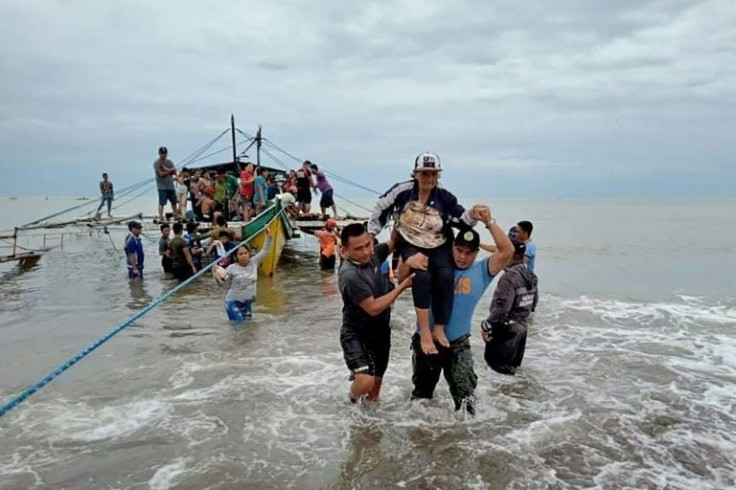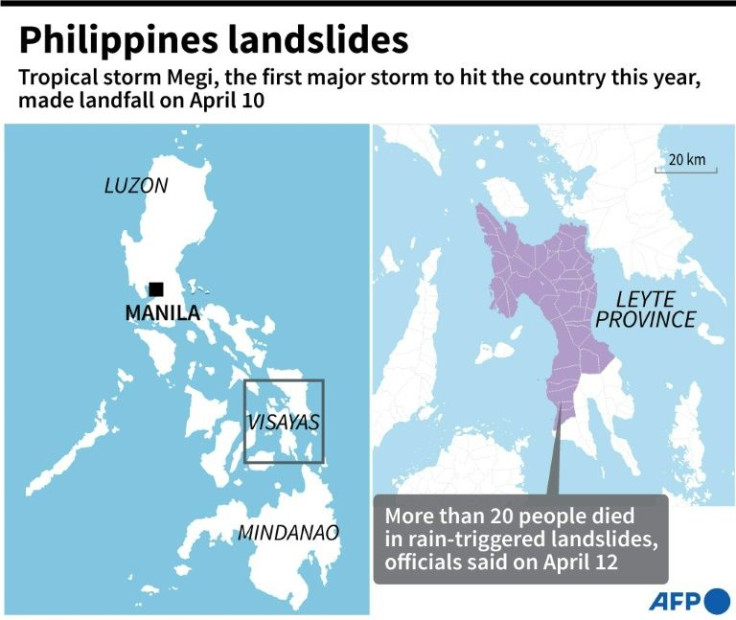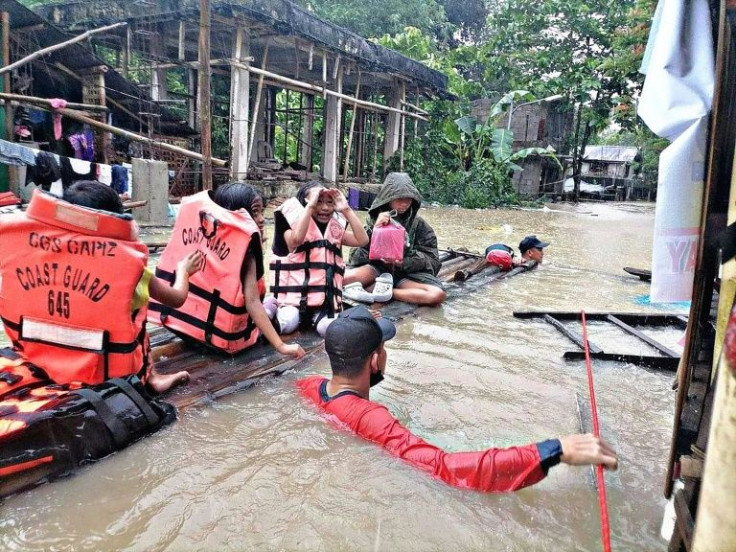Death Toll From Philippines Landslides, Floods Rises To 59
The death toll from landslides and floods in the Philippines rose to 59 on Wednesday, official figures show, as rescuers dug up more bodies with bare hands and backhoes in villages crushed by rain-induced avalanches.
Most of the deaths from tropical storm Megi -- the strongest to hit the archipelago nation this year -- were in the central province of Leyte, where a series of landslides devastated communities.

Rescuers used boats to reach survivors in Pilar, a village of about 400 people in Abuyog municipality, where a torrent of mud and earth pushed houses into the sea on Tuesday and police reported five deaths.
A rumbling sound like "a helicopter" alerted Ara Mae Canuto, 22, to the landslide hurtling towards her family's home. She tried to outrun it, but was swept into the water and nearly drowned.
"I swallowed dirt, and my ears and nose are full of mud," Canuto told AFP by telephone from her hospital bed where she is being treated for cuts and bruises. Her father died and her mother has not been found.

The disaster-prone region is regularly ravaged by storms, including a direct hit from Super Typhoon Haiyan in 2013, and scientists warn they are becoming more powerful as the world gets warmer because of human-driven climate change.
Baybay City is also reeling after waves of sodden soil smashed into farming settlements over the weekend, killing at least 48 people and injuring over 100, local authorities said. Twenty-seven are still missing, they added.

Aerial photos showed a wide stretch of mud that had swept down a hill of coconut trees and engulfed Bunga village, where only a few rooftops poked through the now-transformed landscape.
"We were told to be on alert because a storm was coming, but they did not directly tell us we needed to evacuate," said Bunga farmworker Loderica Portarcos, 47, who lost 17 relatives and a friend in the landslide.
Portarcos braved heat and humidity as she advised a backhoe operator where to dig for three bodies still embedded in the soft soil which had started to smell of rotting flesh.

"Our dead relatives are all in the morgue, but there will be no time for a wake to mourn them because the mayor told us they smell bad," she said.

Three people were also killed in the central province of Negros Oriental and three on the main southern island of Mindanao, according to the national disaster agency.
The military has joined coast guard, police and fire protection personnel in the search and rescue efforts, which have been hampered by bad weather.
The death toll from Megi is expected to rise as the focus switches from searching for survivors to retrieving bodies.
Abuyog police chief Captain James Mark Ruiz told AFP more boats were needed for victims in Pilar after landslides cut off road access to the community.
"This has been the catastrophe that broke my heart," Abuyog Mayor Lemuel Gin Traya wrote on Facebook, saying Pilar had been "completely devastated".
Around 50 survivors have been ferried from the community, the Bureau of Fire Protection said on Facebook on Tuesday.
Photos posted by the agency showed buildings crushed or turned over by the force of the landslide and debris in the water.
Medical workers rushed to treat victims as they were brought to shore, applying bandages to cuts and providing emergency blankets. One woman had her right arm in a splint.
While Pilar survivor Canuto counts herself lucky to be alive, she said "many of us died and a lot are missing too".
Whipping up seas, Megi forced dozens of ports to suspend operations and stranded thousands of people at the start of Holy Week, one of the busiest travel periods of the year in the Philippines.
It came four months after super typhoon Rai devastated swathes of the country, killing more than 400 and leaving hundreds of thousands homeless.
The Philippines -- ranked among the most vulnerable nations to the impacts of climate change -- is hit by an average of 20 storms every year.
© Copyright AFP 2024. All rights reserved.











